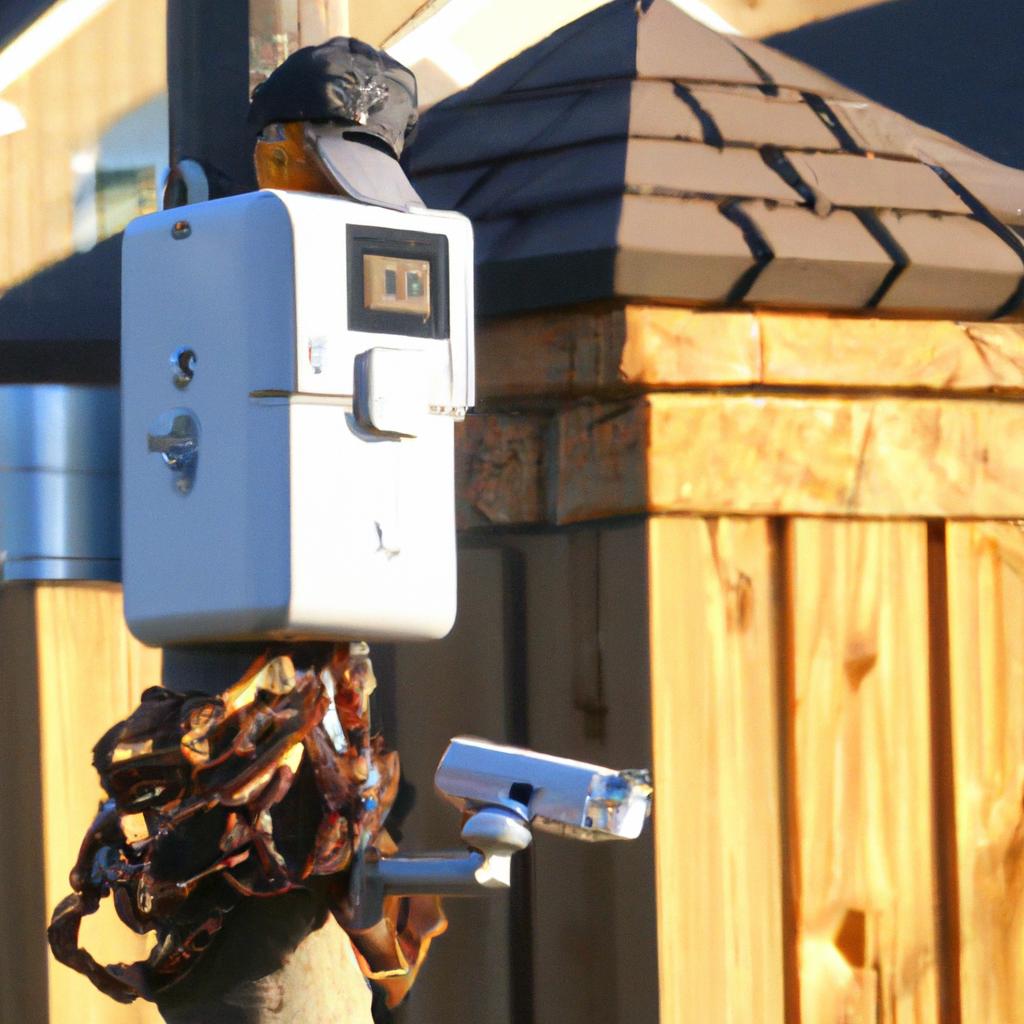The Role of Artificial Intelligence in Cybersecurity
As technology continues to evolve, new and improved methods of protecting ourselves and our data from cyber criminals are in high demand. Artificial intelligence is increasingly becoming a major part of the equation, with its ability to process large amounts of data quickly and accurately to detect any security threats. In this guide, we’ll discuss the role of AI in cybersecurity, the different types of AI technologies used, the benefits and challenges associated with it, examples of successful AI implementations, and tips to help enhance your own cybersecurity measures.
What is Artificial Intelligence?
At its core, artificial intelligence (AI) is the branch of computer science that seeks to create intelligent machines that can think and act like humans. It does this by using algorithms, mathematical models, and neural networks to interpret vast amounts of data and recognize patterns. Through AI technologies, machines are able to learn, reason, adapt, solve problems, and make decisions on their own.
The history of artificial intelligence dates back to the 1950s when pioneering English scientist Alan Turing proposed his “Turing Test” to measure machine intelligence. This was followed by the development of expert systems in the late 1970s, which were able to use stored knowledge to answer questions. Fast forward to today, and AI has become commonplace, from self-driving cars to voice-enabled assistants.
Definition of Artificial Intelligence and Its History
Artificial Intelligence (AI) is a branch of computer science that focuses on the development of intelligent machines. AI machines are designed to replicate the cognitive functions of humans and be able to learn and solve problems. AI has been around since the 1950s but its capabilities have significantly advanced in today’s modern world.
In its early years, AI focused on basic tasks such as recognizing speech, playing games, and reasoning. Early AI focused on producing outcomes from programmed data instead of learning from it. This technology was later enhanced with the ability to process complex information and interact with humans, resulting in today’s AI which is capable of problem-solving, decision-making and autonomous activities.
AI’s history also involves advances in natural language processing, which enabled computers to interpret human speech. Recent breakthroughs such as deep learning have allowed machines to teach themselves by taking input from external sources and using them to predict a result. These breakthroughs have brought AI to the forefront of our daily lives.
Types of AI Technologies in Cybersecurity
Artificial Intelligence (AI) has become a crucial part of cybersecurity. By using AI, companies can detect patterns and potential threats faster. There are a few different types of AI technologies used in cybersecurity, such as machine learning and natural language processing.
Machine Learning
Machine learning is a type of AI that is used to automate the analysis of large data sets. Using algorithms, it can detect patterns and predict future events. In cybersecurity, it can be used to identify malicious files, detect anomalies, and scan for signs of attack.
Natural Language Processing
Natural language processing (NLP) is another type of AI technology used in cybersecurity. It helps to analyze natural language and extract meaning from it. This can help in threat detection as it can detect suspicious communications and patterns in text-based data.
Other Types of AI Technologies
Other types of AI technologies used in cybersecurity include computer vision which can be used for facial recognition and object detection. AI chatbots are also being used by companies to provide customer support and detect fraud. Deep learning is also being used to detect cyber threats quickly.
Benefits of AI for Cybersecurity
Artificial Intelligence (AI) technology can provide immense benefits when it comes to cybersecurity. It can be used to analyze large data sets and help identify security threats quickly and accurately – something that a human cannot do on their own. AI is also able to detect patterns in data that may otherwise not be noticeable, allowing it to spot potential security breaches or suspicious activities.
The use of AI in cybersecurity can also lead to more cost-efficient solutions for businesses. Rather than having to employ an in-house security team to monitor their systems, businesses can outsource this task to companies which specialize in AI-based cybersecurity solutions. AI solutions are much more efficient and cost-effective than manual solutions, as they are able to respond to threats quickly and accurately, resulting in reduced downtime for businesses.
Additionally, AI can be used to automate certain tasks such as system patching and firewall maintenance. This can free up employees’ time to focus on more important tasks, while also ensuring systems are up-to-date and fully protected from any potential threats.
Advancements in AI have also allowed for autonomous security monitoring. AI-powered systems can automatically scan networks and flag any suspicious activity or potential threats, allowing businesses to act swiftly and pre-emptively address the issue. This can help save businesses from costly security breaches and data loss.
Challenges of AI in Cybersecurity
AI-based cybersecurity technologies are powerful tools to identify, analyze and respond to cyber threats. But even with its many advantages, there are some challenges that come with using AI in cybersecurity. Here are three of the most important ones:
- Bias: AI systems can be biased if the datasets used to train them are not diverse enough or contain existing biases. This can lead to wrong or inaccurate answers, which in turn can cause serious security issues.
- Privacy Concerns: AI systems can store and process large amounts of personal data, which can potentially be misused or hacked. Organizations must put in place appropriate measures to protect against unauthorized access and ensure adequate safeguards.
- Unanticipated Risks: As powerful as they are, AI systems can still make mistakes. As a result, organizations must be well prepared to handle any potential risks that might arise from using AI-based cybersecurity technologies.
When deploying AI-powered cybersecurity solutions, it’s essential to take into consideration these potential challenges and to ensure safety at every step.
AI and Cybersecurity Trends
The use of Artificial Intelligence (AI) in cybersecurity is becoming more and more prominent as new technologies emerge. In recent years, we have seen a number of developments in this area, with AI-fueled security solutions becoming increasingly popular. Let’s take a look at some of the trends that are driving the use of AI in cybersecurity.
- Autonomous Security Monitoring – Autonomous security monitoring is an AI-powered approach to network security that allows for automated detection, response and analysis of suspicious activity. This type of technology can help identify potential threats before they become damaging, allowing for timely responses and preventive measures to be put in place.
- Cloud-Based Security Services – Another trend in the use of AI in cybersecurity is the emergence of cloud-based security services. Cloud-based services allow for real-time analysis of data, making it easier to identify and act on security threats quickly. Security updates can be pushed to all connected devices at once, ensuring that everyone is up-to-date and protected.
As these trends continue to shape the use of AI in cybersecurity, it’s important to understand them and how they can help improve our digital security. By utilizing AI-powered solutions, companies can protect their networks from malicious actors and ensure their data is safely stored and accessible.
Examples of AI in Cybersecurity
Artificial Intelligence (AI) has become integral to modern-day cybersecurity systems. AI technologies can be used to analyze large data sets and identify security threats quickly and accurately, making them essential tools for protecting us against cyber threats.
In order to make sure that their networks are as secure as possible, many companies have incorporated AI into their security strategies. For example, Google has used AI to create an automated malware protection system that can detect suspicious activity on their networks. Microsoft’s Azure Security Center also uses AI to detect threats and protect its customers from cyberattacks. Other companies, such as IBM and Symantec, are using AI technology to detect malware and other malicious behavior.
AI technology can be used to help identify potential vulnerabilities in networks and websites, as well as quickly responding to security incidents. It can also be used to automate the process of patching and updating software, ensuring that systems are kept up to date with the latest security patches.
AI-driven security solutions can be incredibly cost-effective and efficient and enable companies to better protect their networks from malicious actors. By utilizing AI technologies, companies can ensure that their networks are safer and more secure.
Conclusion
In conclusion, the role of Artificial Intelligence in cybersecurity cannot be overlooked. AI provides us with the benefits of faster, more accurate threat detection and analysis of large datasets in order to keep our networks safe from malicious activity. Despite the challenges that arise due to bias, privacy concerns and unanticipated risks, the trends towards AI-driven autonomous security monitoring and cloud-based security services show that AI is playing a larger and more active role in the fight against cybercrime. With real-world examples of AI implementation in cybersecurity available to learn from, businesses of all sizes can benefit from incorporating AI into their current security measures.
At the end of the day, it is clear that AI can be a powerful tool when it comes to protecting us from cyber threats. By taking advantage of the speed and accuracy of AI technologies, businesses can greatly improve their chances of staying one step ahead of the bad guys.
References & Sources
When it comes to writing an article on a technical topic such as artificial intelligence and cybersecurity, it is important to provide sources and references to back up all claims. When researching and writing this guide, a variety of sources were used to ensure the accuracy of the information provided. These include books, journal articles, government reports, industry white papers and websites. The following is a list of some of the sources referred to within this guide:
- “Introductions to Artificial Intelligence”, InTech, 2020.
- “Artificial Intelligence in Cybersecurity”, National Security Agency, 2012.
- ”Understanding Machine Learning: A Guide for Business Leaders”, McKinsey and Company, 2017.
- ”Machine Learning for Cyber Security”, IBM Security, 2018.
- ”The Challenges and Benefits of AI in Cyber Security”, Information Age, 2019.
- ”Understanding Cloud-Based Security”, Palo Alto Networks, 2019.
In addition, the article draws from various news articles and blogs related to AI and cybersecurity. The sources listed above are only a small selection of the valuable resources used when researching and writing this guide.
Having an understanding of AI and its role in cybersecurity is essential for anybody looking to stay secure. It can help identify threats quickly, analyze data efficiently, and provide more comprehensive security measures. To ensure the best security defenses, here are a few tips to consider when implementing AI-based solutions:
• Utilize authentication measures like multi-factor authentication, which requires more than one form of identity verification (e.g., PIN, password, thumbprint) when entering information into a system.
• Implement biometric security measures as well, such as face and voice recognition, which are difficult for a hacker to replicate.
• Incorporate encryption and tokenization methods to protect sensitive data from unauthorized access.
• Take advantage of automation capabilities for faster and more accurate detection of threats.
• Regularly update AI systems with new algorithms and data sets to keep up with the rapidly changing cyber threat landscape.
These are just some of the measures that can be taken to ensure the best security for your organization. With the right combination of tools and AI-powered solutions, you can stay ahead of cyberthreats and remain safe from external threats.
FAQs About Artificial Intelligence and Cybersecurity
There are many questions related to the role of artificial intelligence in cybersecurity. Here are some of the most commonly asked questions:
- What is artificial intelligence (AI)?
- How is AI used in cybersecurity?
- What benefits does AI offer in cyber security?
- What challenges are associated with using AI in cybersecurity?
- What are some examples of AI in cybersecurity?
AI is a form of computer technology that allows computers to learn from data, identify patterns, and take action without being explicitly programmed to do so. AI is increasingly being used in cybersecurity to help analyze large amounts of data and detect potential security threats faster and more accurately than humans.
AI provides several benefits for cybersecurity, including reducing the time and resources required to detect threats, improving accuracy, and reducing the risk of human error. Despite the advantages, there are still some challenges associated with using AI in cybersecurity, such as bias, privacy concerns, unanticipated risks, and scalability issues.
There are many examples of companies using AI in their cybersecurity strategies, such as Cybereason, Illumio, and Deep Instinct. These companies have been able to leverage AI’s ability to analyze large amounts of data quickly and accurately to improve their security systems.
Summary
This guide has discussed the role of artificial intelligence (AI) in cybersecurity and how it can be used to identify potential threats in a more timely and accurate manner. We have explored the different types of AI technologies such as machine learning and natural language processing, as well as the benefits and challenges associated with AI usage for cybersecurity purposes. We also looked at some trends in AI-related cybersecurity, as well as real-world examples of successful AI implementations. Finally, we shared some tips on how to apply AI technology to protect against cyber threats, as well as a few commonly asked questions about AI security.
In conclusion, AI has become an essential component of cybersecurity in the modern world. As more organizations rely on data-driven processes, the need to ensure the security of that data is paramount. AI provides an invaluable tool to help monitor and analyze data for any potential threats, making it an invaluable asset for any organization looking to increase its security measures.
comments: 0











